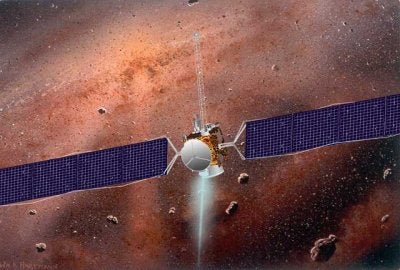On March 2, 2006, NASA announced Dawn, a robotic mission to visit the large asteroids Vesta and Ceres, was called off. To paraphrase American humorist Mark Twain, the reports of Dawn’s death have been greatly exaggerated. Yesterday, NASA announced the mission is back on.
Approved in December 2001, Dawn was supposed to launch in June 2006. Technical issues delayed the launch until July 2007. This delay pushed the cost from an estimated $373 million to $446 million.
Although $257 million had already been spent on the mission, NASA decided to terminate Dawn because of budget overruns and technical problems. An additional $14 million would have been necessary to end Dawn.
After the early-March announcement, the Jet Propulsion Laboratory, which manages Dawn, made an appeal. A review board scrutinized the termination, and chose to reinstate the mission. The review process is a management procedure created by NASA Administrator Michael Griffin to assess major decisions concerning space exploration and agency operations.
“We revisited a number of technical and financial challenges and the work being done to address them,” says NASA Associate Administrator Rex Geveden, who chaired the review panel. “Our review determined the project team has made substantive progress on many of this mission’s technical issues, and, in the end, we have confidence the mission will succeed.”
Christopher Russell, Dawn’s principal investigator, was traveling in Turkey when he heard the news. He knew of the appeal, but had no indications to what the outcome would be. Even after this reprieve, he is still cautious of Dawn’s launch.
“If there are serious problems, a mission can always be cancelled,” Russell told Astronomy. “There are no guarantees in this business.”
By investigating Vesta and Ceres, the mission should shed light on the characteristics of the early solar system.










